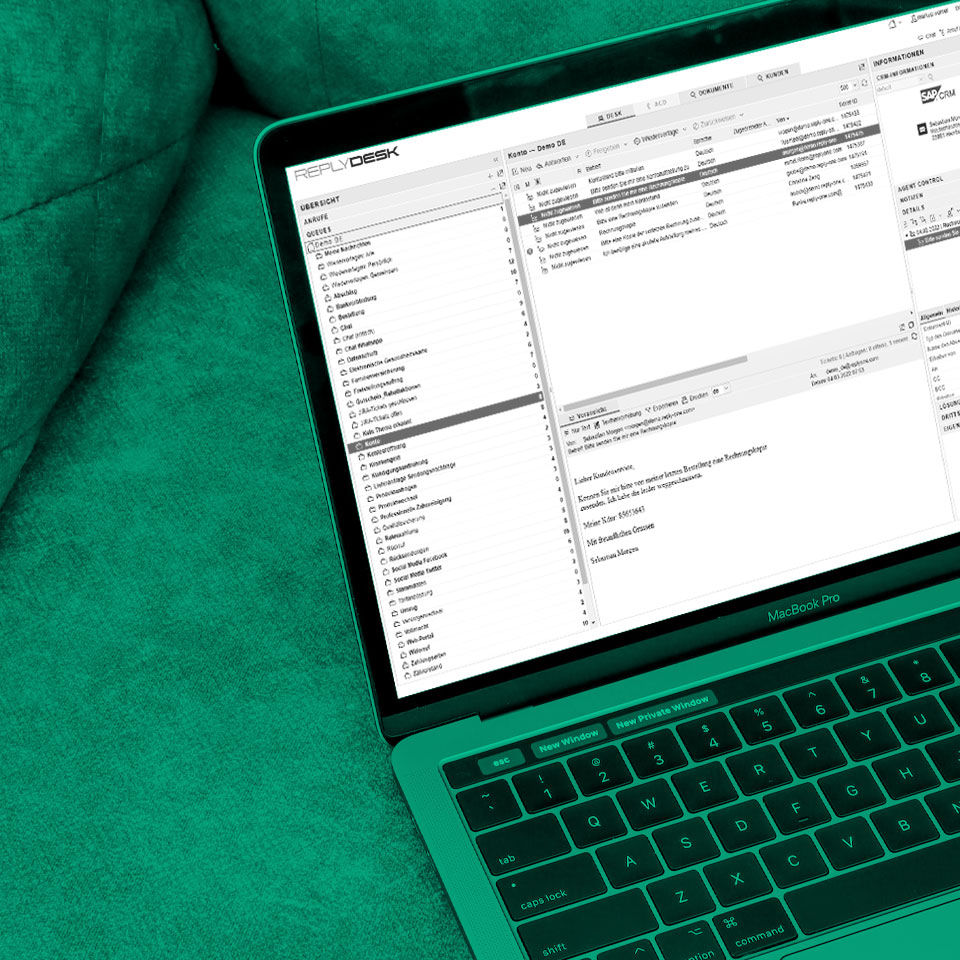Routing inquiries
Inquiries
recognized and correctly distributed
ReplyOne processes over 30 million inquiries per year and distributes them to over 8,000 employees. Targeted routing of your customer inquiries to the appropriate team members ensures faster responses to your customers.

The third step to the best customer service
The routing of your customer requests
THE REPLYONE WORKFLOW
Spot landing through targeted routing of your requests
You know your company and your team best - you determine the routing rules individually. Configure the rules according to category, channels and topics. Define points such as qualification, responsibility, urgency and availability in the service team in the workflow. In this way, a request is forwarded directly to the best contact person and customers are helped quickly.
Give your customer service a personal touch. When customers contact you several times about a concern, they want to clarify questions with the employee who has already dealt with the issue before. With last agent routing, the employee who has previously dealt with the case receives the ticket. Skill-based routing focuses on the knowledge of the service employee.
You determine what is to be taken into account during routing. This not only ensures clear allocations, but also supports the assignment of special topics.
REPLYONE LIVE
Response management solutions today: e-mail, SMS, chat, messenger
In the TeleTalk demo forum at CCW 2024, companies will present their smart solutions in direct comparison. Our colleague Sylke Dörr represented us in the topic block 'Response management - automation of customer communication'.
What's the use?
The routing variants
of ReplyOne
Many roads lead to Rome. Or to the best employee. Automated routing, such as skill-based routing, is a key success factor in the processing of inquiries. Here is a selection of the most popular options:
Skill-based routing
You define which knowledge and skills the employees need for requests. These can be languages, specialist knowledge or expertise, for example. In addition, the workflow can assign skill levels to the employees on a scale of 1-10, whereby the skill level can be adjusted in case of high workload.
Skill-based required routing
When it comes to quality over quantity, skill-based required routing is your best bet. With this option, incoming documents are only routed when a member of the service team with the appropriate skill is available.
Push or pull
Should requests be distributed automatically to all employees? Or do the service employees fetch the documents independently from the queue according to capacity? That is up to you. Your admins or team leaders define the process. With push, you can avoid cherry-picking, for example.
Priority queue
Load-balanced routing
Round-Robin
Incoming requests are assigned to employees based on a defined sequence. Taking attendance into account, messages are distributed evenly across the service team. In this way, all employees work through the same number.
